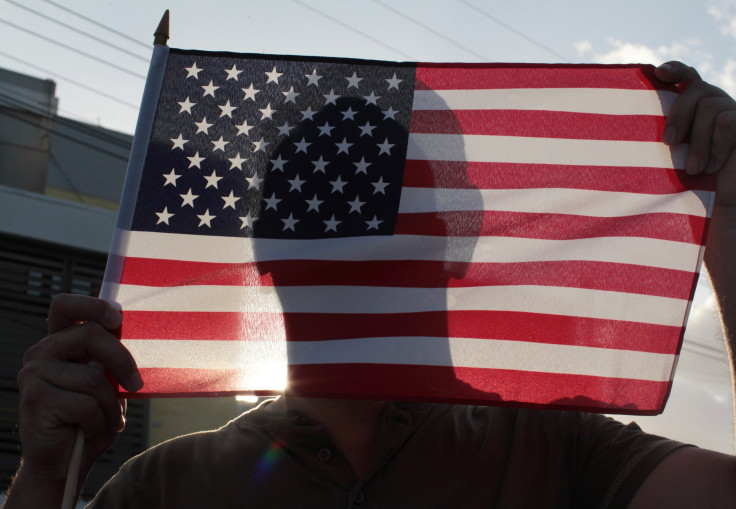Flag Day 2017: 11 Facts To Know About The USA’s Star-Spangled Banner

Wednesday is Flag Day, an official observance of the Second Continental Congress' official adoption of the stars and stripes in 1777 that represents the country.
The First Flag Act declared that the new flag would have "13 stripes alternate red and white: that the union be thirteen stars, white in a blue field, representing a new constellation." Former President Woodrow Wilson wanted Americans to mark Flag Day to leave behind “every thought that is not worthy of our fathers’ first vows in independence, liberty, and right” and instead “stand with united hearts, for an America which no man can corrupt, no influence draw away from its ideals, no force divide against itself.”
Read: How Much Will Trump's Veterans Choice Program Cost Taxpayers?
Here are 11 facts about the American flag:
1. The version of the flag the U.S. uses today is the 27th, and the final star is for Hawaii, which was the 50th state added in 1960.
2. The first time the flag was flown after being adopted was on Aug. 3, 1777, in Rome, New York.
3. According to usflag.org, the colors of the flag signify purity, valor, and justice. The white is for purity, the red is for valor and blue is for justice.
4. Flag Day was not marked as an official federal holiday. Pennsylvania became the first state to celebrate Flag Day as a state holiday on June 14, 1937.
5. Some of the nicknames for the American flag are “old glory,” “star-spangled banner,” “red, white and blue,” and “stars and stripes.”
6. There are six American flags on the moon, five of which are still standing.
7. The flag didn’t always have 13 stripes. In 1794, two extra stars and stripes were added to honor Kentucky and Vermont joining the Union.
8. The flag is always flying at the White House, Fort McHenry in Baltimore and the Iwo Jima Memorial in Arlington, Virginia.
9. The Pledge of Allegiance was penned in 1892, and it read, “I pledge allegiance to my flag and the republic for which it stands, one nation, indivisible, with liberty and justice for all.”
Read: Here Are 4 Ways To Support Military Veterans In The US
10. Section 4 of the Flag Code states: "I pledge allegiance to the Flag of the United States of America, and to the Republic for which it stands, one Nation under God, indivisible, with liberty and justice for all, should be rendered by standing at attention facing the flag with the right hand over the heart. When not in uniform men should remove any non-religious headdress with their right hand and hold it at the left shoulder, the hand being over the heart. Persons in uniform should remain silent, face the flag, and render the military salute."
11. It was believed New Jersey Rep. Francis Hopkinson, signer of the Declaration of Independence, designed the first American flag. Later, many believed Betsy Ross designed the flag, but there’s no evidence she designed the first American flag, although she was paid at one point for creating “ships colours.”
© Copyright IBTimes 2024. All rights reserved.




















